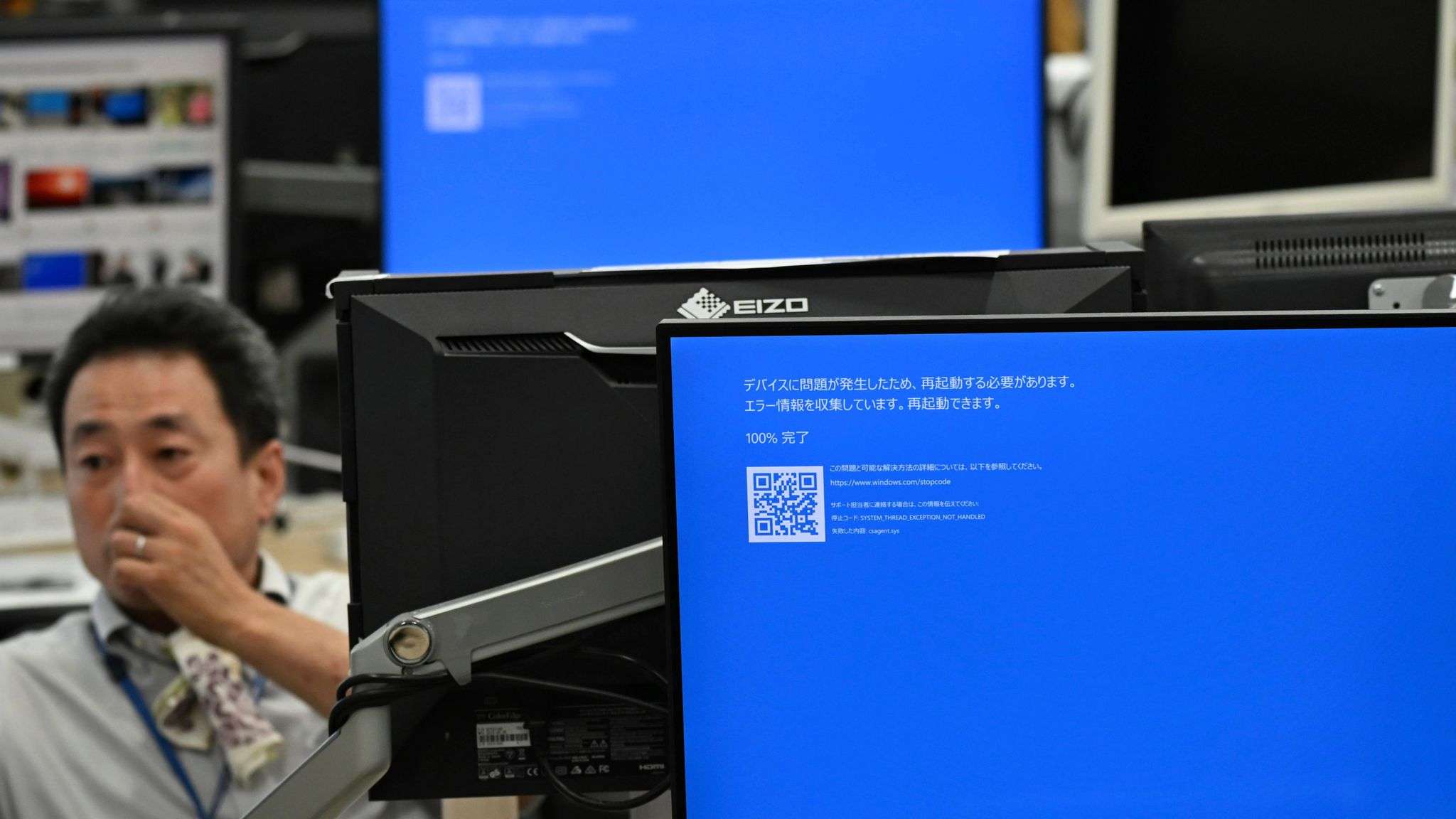A widespread IT outage at Microsoft has caused significant disruptions across various sectors, including airports, businesses, and broadcasters. The incident, which began in the early hours of Thursday, has left many organizations grappling with major operational challenges. This latest technology breakdown has underscored the vulnerabilities inherent in relying heavily on digital infrastructure.
Airports have been among the hardest hit by the outage. Major hubs around the world reported delays and cancellations as crucial systems for check-ins, baggage handling, and flight scheduling went offline. Passengers faced long lines and extended wait times, with many expressing frustration over the lack of clear communication and updates. For airlines, the outage has meant rescheduling flights, rebooking passengers, and dealing with the logistical nightmare of coordinating with numerous airports simultaneously affected.
Businesses, both large and small, have also felt the impact of the outage. Many companies that rely on Microsoft’s cloud services, including Azure and Office 365, experienced disruptions in their daily operations. This has affected everything from email communications to access to critical documents stored in the cloud. The outage has forced companies to revert to manual processes, significantly slowing down productivity and efficiency. For some, it has also meant financial losses, as transactions and other business activities were put on hold.
Broadcasters, too, have been struggling with the fallout. Several news networks and media organizations that depend on Microsoft’s cloud services for content distribution and newsroom operations faced interruptions. This has led to delays in news broadcasts, challenges in accessing archived footage, and difficulties in coordinating remote reporting. In an industry where timeliness is crucial, the outage has posed significant obstacles to delivering news to the public promptly.
Microsoft has acknowledged the issue and is working to restore services as quickly as possible. In a statement, the company attributed the outage to a “configuration error” that affected the network infrastructure, causing widespread connectivity problems. Microsoft’s engineering teams have been mobilized to identify and rectify the issue, with efforts ongoing to bring affected services back online.
The outage has prompted a wave of criticism from affected users and industry experts, who question the robustness and resilience of Microsoft’s systems. There are growing calls for improved safeguards and redundancy measures to prevent such extensive disruptions in the future. As digital infrastructure becomes increasingly central to various sectors, the need for reliable and resilient systems is more critical than ever.
In the wake of the outage, businesses and organizations are reassessing their dependency on single-provider solutions and considering diversification strategies to mitigate similar risks in the future. This incident may accelerate the adoption of multi-cloud strategies, where organizations use multiple cloud service providers to ensure continuity in case one provider faces issues.
As Microsoft works to resolve the outage, the broader implications for the tech industry and its customers are becoming clear. The incident serves as a stark reminder of the fragility of digital ecosystems and the far-reaching consequences of technological failures. Moving forward, both service providers and users will need to place greater emphasis on resilience and preparedness to navigate the complexities of a highly interconnected digital world.








































